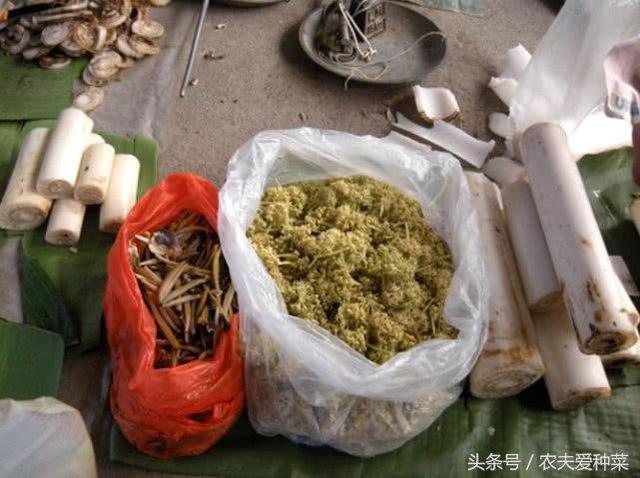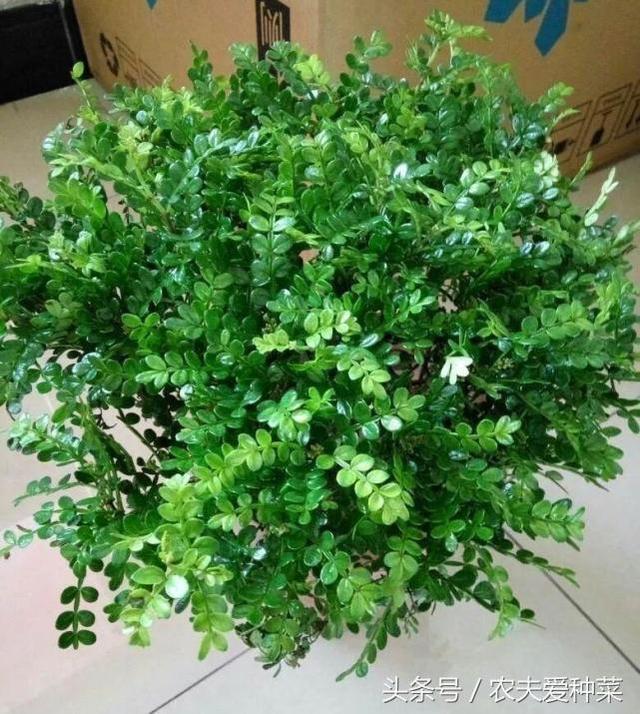When you come across a kind of wild vegetable with a white stick, many people have never eaten it with high nutrition and hemostatic effect.

On the road, I met a man selling a white vegetable, which was like a white stick, of different lengths, and was regularly placed on the banana leaves. Only after asking, did I know that this is a wild banana core, a wild vegetable that can be eaten.
In fact, this kind of plant plantain is still very common in the rural areas of the south. I remember when I was a child, a big banana tree grew in front of my second mother-in-law's house. It would produce a lot of bananas, just like a string of bananas. Although it tastes very astringent, I ate it several times when I was a child. Today, we are talking about the core of this kind of banana tree, which is also edible and tastier than plantains.
As we all know, it can grow into a big tree 2.5-4 meters high, with broad leaves, oblong leaves, 2-3 meters long, about 30 centimeters wide, and evergreen all the year round. Its branches are generally covered with layers of skin. after the plantains are cut down, they are stripped of the old parts outside. The tender part of the plantain branches is the plantain core, which is cut short like a white stick.
The method of banana core is relatively simple. It is cooked until it is soft and rotten, then mixed with salt and chili, or used for stir-frying, but it is all cooked before frying. The banana core is rich in nutrition and has the effects of heat-clearing and detoxification, diuresis and detumescence. In the past, the banana core was chopped and applied to treat trauma, which had a certain hemostatic effect.
The core of the plantain we see is not necessarily edible, but mainly the wild banana core. Wild plantain is a perennial herb with warm sex, strong stem meristematic ability, tolerance to semi-shade, strong adaptability and fast growth.
At present, there are more plantains planted artificially, mainly for fruit tree cultivation, or landscaping tree species, which are very suitable for plantain cultivation in some places where the land is fertile and loose and has good air permeability. It is also very shady, semi-shade or scattered light can make it grow well, too shaded, the plant growth is poor, it is difficult to blossom.
However, Issa is not resistant to cold. It must maintain a temperature of more than 4 ℃ in winter, but it can also withstand a low temperature of 0 ℃ for a short time. Issa also likes to be moist, watering more during the growing period, and spraying water to the plants to maintain air humidity, high temperature and rainy summer, should control watering, and pay attention to drainage, avoid continuous stagnant water and rotten roots.
Artificial cultivation of plantain is not like no fertilization in the wild. We can plant it in front of the house, behind the house, on the edge of the field, and so on. Before planting, we must apply sufficient base fertilizer, such as barnyard manure, compost, and so on. During its growing period, we should also apply mature organic fertilizer once a month, which is more conducive to improving quality.
- Prev

The less it is watered, the better it grows. It is very drought-tolerant, but potted plants without watering for 30 days are easy to raise at home.
This kind of plant is called fragrant wood, which is particularly drought-tolerant and barren-tolerant. To raise it is to water less and grow better. Even if it is not watered for a month, it can live well. Potted plants can also spread fragrance at home, which is very suitable for breeding.
- Next

The favorite table vase of white-collar workers can grow plants without soil.
Look at the screen for a long time, want to take a look at the green mind tired, want to relax the mind life is very boring, need more surprise life is very happy, hope to share beauty and joy with friends green plant four little flowers: green apple, bamboo taro, green spirit.
Related
- Wuhan Hospital Iron Tree Blooming Result Was Instantly Frightened by the Gardener Master
- Which variety of camellia is the most fragrant and best? Which one do you like best?
- What is the small blue coat, the breeding methods and matters needing attention of the succulent plant
- Dormancy time and maintenance management of succulent plants during dormancy
- Minas succulent how to raise, Minas succulent plant pictures
- What are the varieties of winter succulent plants
- How to raise succulent plants in twelve rolls? let's take a look at some experience of breeding twelve rolls.
- Attention should be paid to water control for succulent plants during dormant period (winter and summer)
- Watering experience of twelve rolls of succulent plants
- Techniques for fertilizing succulent plants. An article will let you know how to fertilize succulent plants.

